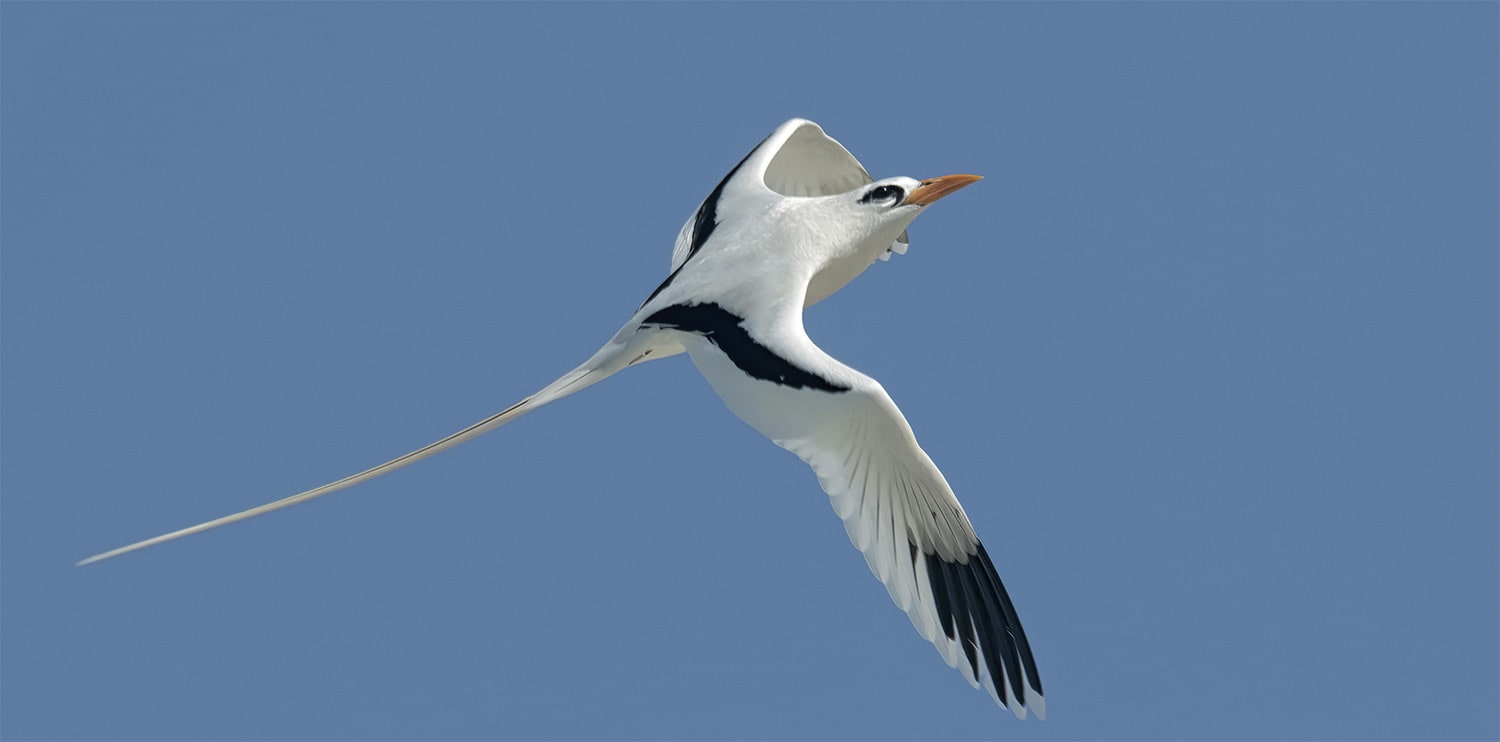
32 interesting facts about tropicbirds
- 👁️ 265
Tropicbirds are a fascinating group of seabirds that grace the skies with their strikingly elegant features and spectacular aerial acrobatics. Known for their predominantly white plumage, black markings, and exceptionally long tail feathers, tropicbirds inhabit tropical and subtropical oceans around the world. They are often seen gliding gracefully over open waters, far from land, except during breeding seasons when they return to islands to raise their young. Tropicbirds embody the beauty of the marine avian world, captivating bird watchers and marine biologists alike with their unique characteristics and behaviors. Here are thirty-two interesting and informative facts about tropicbirds that highlight their special qualities and ecological significance.
- Tropicbirds belong to the family Phaethontidae, which consists of three species.
- The three species are the red-billed tropicbird, the white-tailed tropicbird, and the red-tailed tropicbird.
- Tropicbirds can be found in tropical and subtropical regions across the Atlantic, Pacific, and Indian Oceans.
- They are pelagic birds, spending most of their lives flying over open ocean, only coming ashore to breed.
- Tropicbirds are known for their dramatic long tail feathers, which can be over twice the length of their body.
- Unlike many seabirds, tropicbirds do not have webbed feet; instead, their feet are only partially webbed.
- They catch their food by diving from a height into the sea to catch fish and squid.
- Tropicbirds often fly alone or in pairs, rather than in large flocks.
- Their distinct sharp, shrill cries are often heard before the birds are seen.
- The nesting sites of tropicbirds are usually found on isolated, predator-free islands.
- Tropicbirds lay only a single egg per breeding season.
- The incubation of the egg is shared by both parents and typically lasts around 40 to 46 days.
- Chicks are semi-altricial at birth, meaning they are relatively immobile and have only down feathers.
- Parent tropicbirds feed their chicks by regurgitation.
- Juvenile tropicbirds will not develop the full long tail feathers until they reach full maturity.
- The white plumage of tropicbirds helps them blend into the bright tropical sunlight from above, protecting them from predators.
- They have a specialized gland above their nasal passages to excrete salt, due to their marine diet.
- Tropicbirds perform a unique courtship display that includes high-flying, swooping, and calling sequences.
- They have a lifespan of up to 16 years in the wild.
- The longest tail streamers are found in male tropicbirds and are likely used to attract females.
- Tropicbirds are strong fliers, capable of rapid flight speeds.
- Despite their elegance in the air, tropicbirds are somewhat clumsy during takeoffs and landings.
- The global population of tropicbirds is considered small compared to other seabirds, though they cover vast geographic areas.
- Tropicbird chicks are often vulnerable to predation by introduced species such as rats and cats on breeding islands.
- Red-billed tropicbirds are the largest of the three species.
- White-tailed tropicbirds are the smallest and have the most widespread distribution.
- Red-tailed tropicbirds are distinguished by their brilliant red tail streamers.
- Tropicbirds do not engage in mass migrations but may move towards warmer waters outside of the breeding season.
- Juveniles leave the nest about 10 to 12 weeks after hatching but may receive additional care for several weeks.
- Climate change and rising sea levels pose threats to their nesting sites on low-lying islands.
- Tropicbirds have been historically hard to study due to their remote nesting sites and solitary nature.
- They are sometimes mistaken for terns but can be distinguished by their larger size and longer tails.
Tropicbirds exemplify the beauty and adaptability of seabirds in tropical and subtropical marine environments. With their striking appearance and fascinating behaviors, they continue to intrigue and attract attention from the scientific community and bird enthusiasts worldwide. The preservation of their habitats, particularly their nesting sites, is crucial for ensuring their survival amid changing global climates and increasing human disturbances. By understanding more about these elegant birds, we can better appreciate the complexities of marine biodiversity and the importance of protecting our natural world.
Tropicbirds are a fascinating group of seabirds that grace the skies with their strikingly elegant features and spectacular aerial acrobatics. Known for their predominantly white plumage, black markings, and exceptionally long tail feathers, tropicbirds inhabit tropical and subtropical oceans around the world. They are often seen gliding gracefully over open…